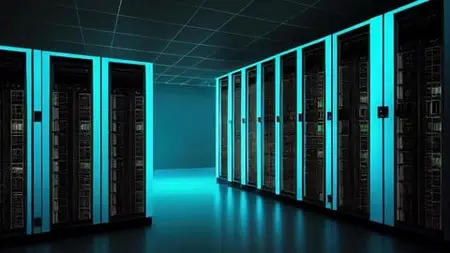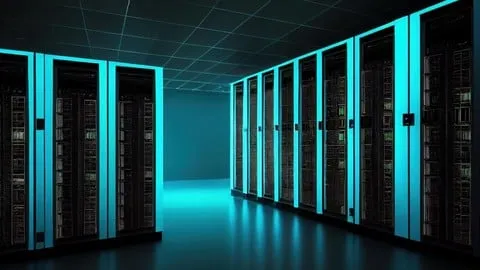Ibm Mainframe Testing: Ensure Quality In Enterprise Systems
Published 11/2024
MP4 | Video: h264, 1920x1080 | Audio: AAC, 44.1 KHz
Language: English | Size: 2.70 GB | Duration: 13h 27m
Published 11/2024
MP4 | Video: h264, 1920x1080 | Audio: AAC, 44.1 KHz
Language: English | Size: 2.70 GB | Duration: 13h 27m
Master the Principles, Techniques, and Tools for Testing Mainframe Systems with Real-World Scenarios and Best Practices.
What you'll learn
Understand the fundamentals of mainframe testing and its role in enterprise environments.
Learn the objectives, principles, and key concepts of mainframe testing.
Gain insight into risk identification, assessment, and management in mainframe systems.
Explore various testing strategies and how to apply them effectively in mainframe projects.
Comprehend the phases of the Software Testing Life Cycle (STLC) and their application in mainframe testing.
Identify and perform different types of testing in mainframes, including functional, integration, performance, and security testing.
Develop skills in creating effective test plans, managing errors, and conducting model-based testing.
Understand the bug life cycle and learn how to track, report, and resolve defects in mainframe applications.
Master key testing metrics and estimation techniques to measure and improve testing efficiency.
Gain familiarity with industry standards such as ISO for ensuring quality in mainframe testing processes.
Address common challenges and clarify doubts faced by mainframe testers.
Enhance testing skills through practical exercises, real-world scenarios, and end-of-course assessments.
Requirements
Enthusiasm and determination to make your mark on the world!
Description
A warm welcome to the IBM Mainframe Testing: Ensure Quality in Enterprise Systems course by Uplatz.Mainframe Testing involves verifying and validating the functionality, performance, security, and reliability of mainframe systems and applications. Mainframes are used for mission-critical operations in industries like banking, insurance, retail, and telecommunications. Testing ensures that mainframe applications handle large volumes of data and transactions without errors, maintaining system stability and performance.How Mainframe Testing WorksMainframe testing follows a structured approach similar to other software testing processes but with specific tools and techniques tailored for mainframes:Environment SetupConfigure the mainframe environment with the necessary hardware, software, and testing tools.Establish access to systems like z/OS, CICS, COBOL programs, and databases such as DB2.Test PlanningDefine test objectives, scope, and requirements.Create detailed test plans, including the identification of test cases and data requirements.Test Case DesignDesign test cases to validate functional and non-functional requirements.Include scenarios for batch processing, online transactions, and integrations.Test Data PreparationUse production-like data or synthetic data to simulate real-world scenarios.Leverage tools like File-AID and TSO/ISPF for data creation and manipulation.Test ExecutionExecute test cases using tools like JCL scripts for batch processing or interactive testing environments for online systems.Monitor logs, output files, and system performance.Defect Reporting and DebuggingIdentify bugs or issues in application logic, database queries, or system configuration.Report and track defects using bug tracking tools.Regression and Integration TestingPerform regression tests to ensure new changes do not affect existing functionality.Validate integrations with external systems or databases.Performance and Load TestingTest the system's behavior under heavy transaction loads to ensure scalability and reliability.Benefits of Learning Mainframe TestingBy mastering mainframe testing, you can contribute to ensuring the reliability and efficiency of systems that are integral to the operations of some of the largest organizations globally.High Demand in Key IndustriesMainframes are widely used in banking, finance, insurance, and government sectors. Proficiency in mainframe testing opens doors to job opportunities in these fields.Stable and Lucrative CareerMainframe testing specialists are in demand due to the critical nature of mainframe systems, often resulting in stable and well-compensated roles.Understanding Legacy and Modern SystemsGain expertise in bridging legacy systems with modern technologies, a valuable skill for system modernization projects.Comprehensive Testing SkillsLearn unique testing techniques for batch processing, transaction systems (CICS), and mainframe-specific databases like DB2.Improved Debugging and Problem-SolvingDevelop a strong foundation in debugging complex mainframe programs and managing errors effectively.Work with High-Performance SystemsUnderstand and test systems that handle large-scale, mission-critical operations for global enterprises.Tool MasteryGain hands-on experience with tools like JCL, File-AID, TSO/ISPF, and more, making you industry-ready.Opportunity for SpecializationBuild expertise in niche areas like performance testing, batch job testing, and database testing in mainframes.Support for Digital TransformationPlay a critical role in organizations modernizing their mainframe systems while ensuring quality and reliability.Global RelevanceMainframe systems are used worldwide, providing opportunities for global projects and collaboration.Mainframe Testing - Course CurriculumModule 1: Introduction to Mainframe TestingDay 1: Mainframe Testing OverviewIntroduction to mainframe testing.Importance and scope of testing in mainframe systems.Module 2: Mainframe Testing Principles and Risk ManagementDay 2: Testing Objectives and PrinciplesKey objectives and guiding principles in mainframe testing.Day 3: Understanding Risk in Mainframe TestingTypes of risks associated with mainframe systems.Day 4: Risk Management in Mainframe TestingTechniques for identifying, assessing, and mitigating risks.Module 3: Testing Fundamentals and StrategiesDay 5: Fundamentals of TestingConcepts, terminologies, and importance of testing.Day 6: Testing StrategiesCommon testing strategies for mainframe environments.Module 4: Software Testing Life Cycle (STLC)Day 7: Overview of STLCPhases of STLC and their relevance to mainframe testing.Module 5: Frequently Asked Questions and ClarificationsDay 8: Common Questions from Mainframe TestersAddressing important questions and providing clarifications for testers.Module 6: Types of Testing in MainframesDay 9-12: Comprehensive Coverage of Testing TypesFunctional testing.Integration testing.Regression testing.Performance testing.Security testing.User acceptance testing (UAT).Module 7: Advanced Topics in Mainframe TestingDay 13: Test Planning and Error ManagementUnderstanding damage, creating test plans, and handling errors.Introduction to model-based testing.Day 14: Bug Life Cycle, Testing Metrics, and StandardsBug life cycle stages.Estimating testing efforts and using key metrics.ISO standards in software testing.Module 8: Practical Skill AssessmentDay 15: Test Your Testing SkillsPractical exercises to evaluate understanding and application of mainframe testing concepts.
Overview
Section 1: Mainframe Testing Introduction
Lecture 1 Mainframe Testing Introduction
Section 2: Mainframe Testing Objectives and Principles
Lecture 2 Mainframe Testing Objectives and Principles
Section 3: Risk in Mainframe Testing
Lecture 3 Risk in Mainframe Testing
Section 4: Risk Management in Mainframe Testing
Lecture 4 Risk Management in Mainframe Testing
Section 5: Fundamentals of Mainframe Testing
Lecture 5 Part 1 - Fundamentals of Mainframe Testing
Lecture 6 Part 2 - Fundamentals of Mainframe Testing
Section 6: Mainframe Testing Strategies
Lecture 7 Mainframe Testing Strategies
Section 7: Mainframe Testing STLC
Lecture 8 Mainframe Testing STLC
Section 8: Important Questions in Mainframe Testers Mind and Clarification
Lecture 9 Important Questions in Mainframe Testers Mind and Clarification
Section 9: Different Types of Testing in Mainframe
Lecture 10 Part 1 - Different Types of Testing in Mainframe
Lecture 11 Part 2 - Different Types of Testing in Mainframe
Lecture 12 Part 3 - Different Types of Testing in Mainframe
Lecture 13 Part 4 - Different Types of Testing in Mainframe
Section 10: Damage Test Plan and Errors and Model Based Testing
Lecture 14 Damage Test Plan and Errors and Model Based Testing
Section 11: Bug Life Cycle, Testing Estimates and Different Metrics, Testing ISO Standards
Lecture 15 Bug Life Cycle, Testing Estimates and Different Metrics, Testing ISO Standards
Section 12: Test your Mainframe Testing Skills
Lecture 16 Part 1 - Test your Mainframe Testing Skills
Lecture 17 Part 2 - Test your Mainframe Testing Skills
Software testers specializing in mainframe applications.,QA professionals seeking expertise in mainframe testing tools and techniques.,IT graduates aiming to build a career in mainframe testing.,Test automation engineers working with mainframe environments.,Manual testers transitioning to mainframe testing roles.,Mainframe developers wanting to enhance their testing skills.,System administrators involved in testing mainframe performance and stability.,Business analysts ensuring functional accuracy in mainframe-based systems.,Project managers overseeing mainframe application testing.,Professionals in banking, insurance, or retail industries working on mainframe systems.,Test engineers interested in end-to-end testing for COBOL, JCL, CICS, and DB2.,Mainframe support engineers responsible for validating bug fixes and updates.,Automation tool specialists focusing on tools like IBM RFT, Selenium, or LoadRunner for mainframes.,Data testers validating mainframe data integrity and ETL processes.,Performance testers optimizing mainframe batch and online applications.



